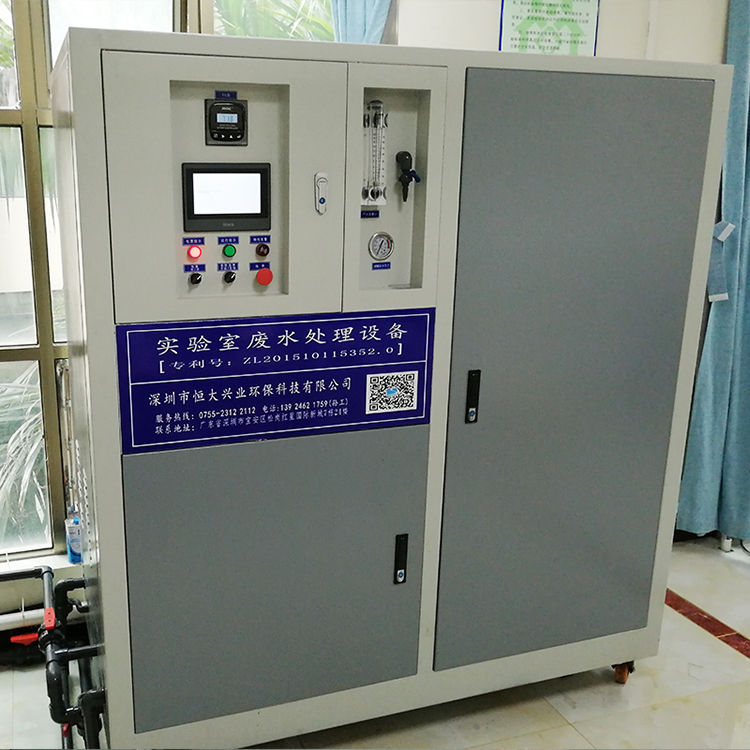Pharmaceutical factory sewage treatment
Discharge and treatment plan of laboratory wastewater in colleges and universities
Laboratory wastewater treatment equipment is aimed at the wastewater generated during the cleaning process of the used experimental equipment after the completion of the experiment, using treatment equipment and technology to separate the pollutants in the wastewater, or through chemical treatment methods to remove harmful substances Converted into harmless substances, to achieve waste water purification, adopt multiple process treatments, and meet my country's sewer discharge standards.
The waste water produced by different experiments contains different harmful substances. Each type of waste water treatment is a unit operation. The waste water pollutants of chemical laboratories in colleges and universities are diverse and determined by many factors. It is impossible to adopt the same In this way, all the pollutants contained in laboratory wastewater can be removed. Therefore, in order to achieve high-efficiency experimental wastewater to meet my country's prescribed discharge standards, we often need to combine and integrate several methods in the design and treatment process. In order to achieve a better treatment effect.

There are several types of experimental wastewater treatment in the current industry: coagulation sedimentation method, semi-permeable membrane method, reverse osmosis method, etc. In the process of purchasing laboratory wastewater treatment equipment, we need to consider: economy, safety and treatment effect, etc., to save a certain amount of investment while ensuring that the treated water meets the discharge standard and does not pollute the environment.
With the complete talent training plan, efficient expansion of enrollment and the increase of scientific research projects, the frequency of use of chemical laboratories is increasing. In order to meet the requirements of various experiments, the number of laboratories has also increased. The discharge of the three wastes (exhaust gas, waste water and waste residue) generated from the experiment also increased. We all know that many chemical agents are used in the process of testing, such as high concentration of chemical substances, types of chemical substances, uncertain discharge time, and difficulty in concentration.
Laboratory wastewater can be divided into two categories: organic wastewater and inorganic wastewater according to chemical properties. Inorganic wastewater mainly includes: acid-base wastewater, wastewater containing sulfide and wastewater containing plum halide ions. Organic wastewater mainly includes: toxic substances (such as phenols, aniline substances), flammable and explosive substances. Although the total amount of laboratory wastewater is relatively small, if it is not treated, it will be discharged externally, which will cause great pollution to the environment. Therefore, it is urgent for us to strengthen the prevention and treatment of laboratory wastewater.
According to the characteristics of laboratory wastewater, it is mainly divided into acid-base wastewater, wastewater containing heavy metal ions and organic wastewater. Shenzhen Evergrande Xingye Environmental Protection Technology Co., Ltd. independently researches and develops integrated laboratory wastewater treatment equipment. It uses waste liquid buckets to collect uniformly. The collected laboratory wastewater enters the grille regulating tank through the lifting pump, and adjusts the PH value. The drug reaction coagulates and precipitates, and the supernatant enters the sterilization tank for high-quality oxidative sterilization, and then further passes through the multi-media filter to remove fine particles of heavy metals, etc., and discharge up to the standard.


![[nav:name]](/en/static/upload/image/20210731/1627700070576564.jpg)

